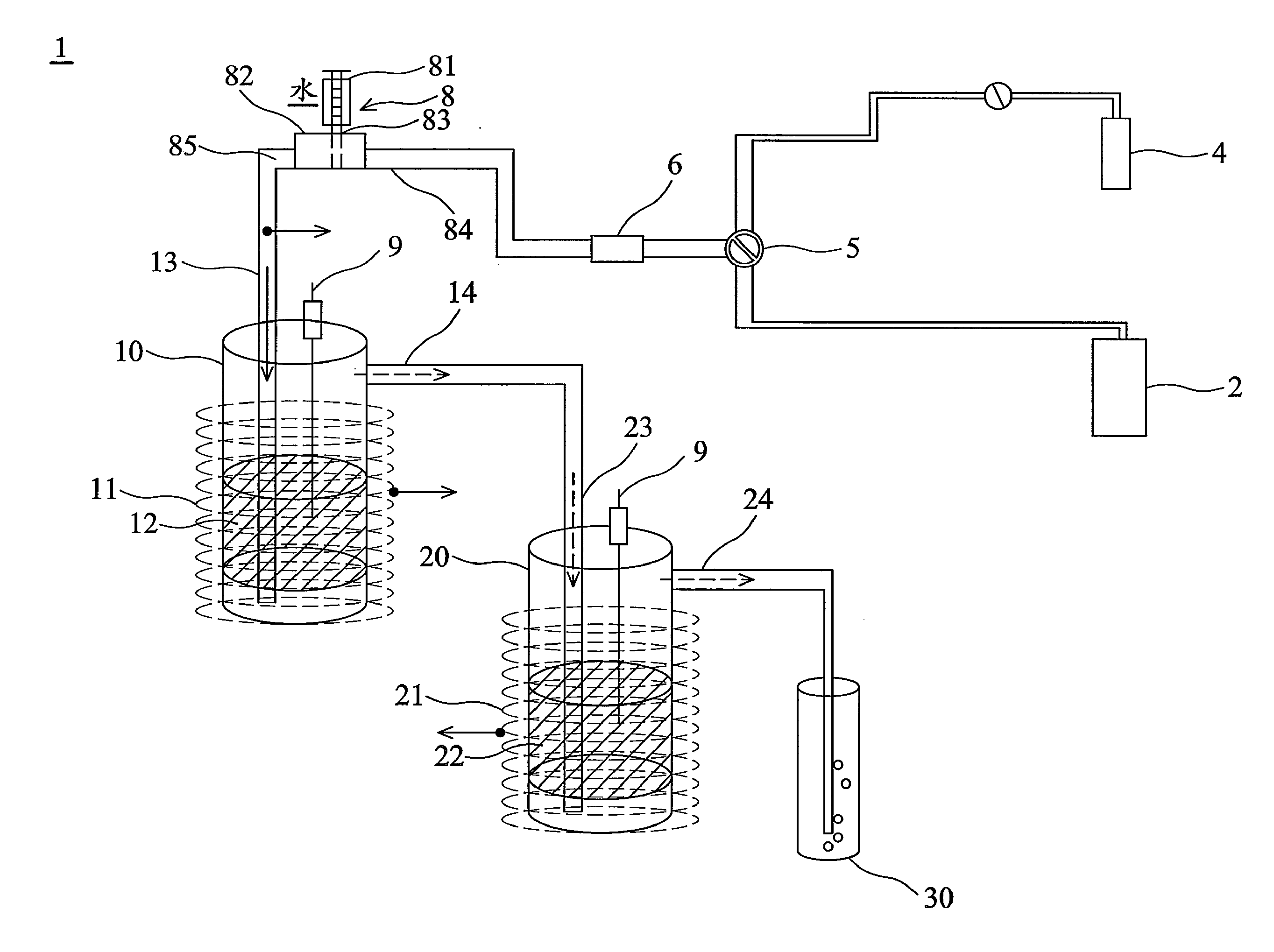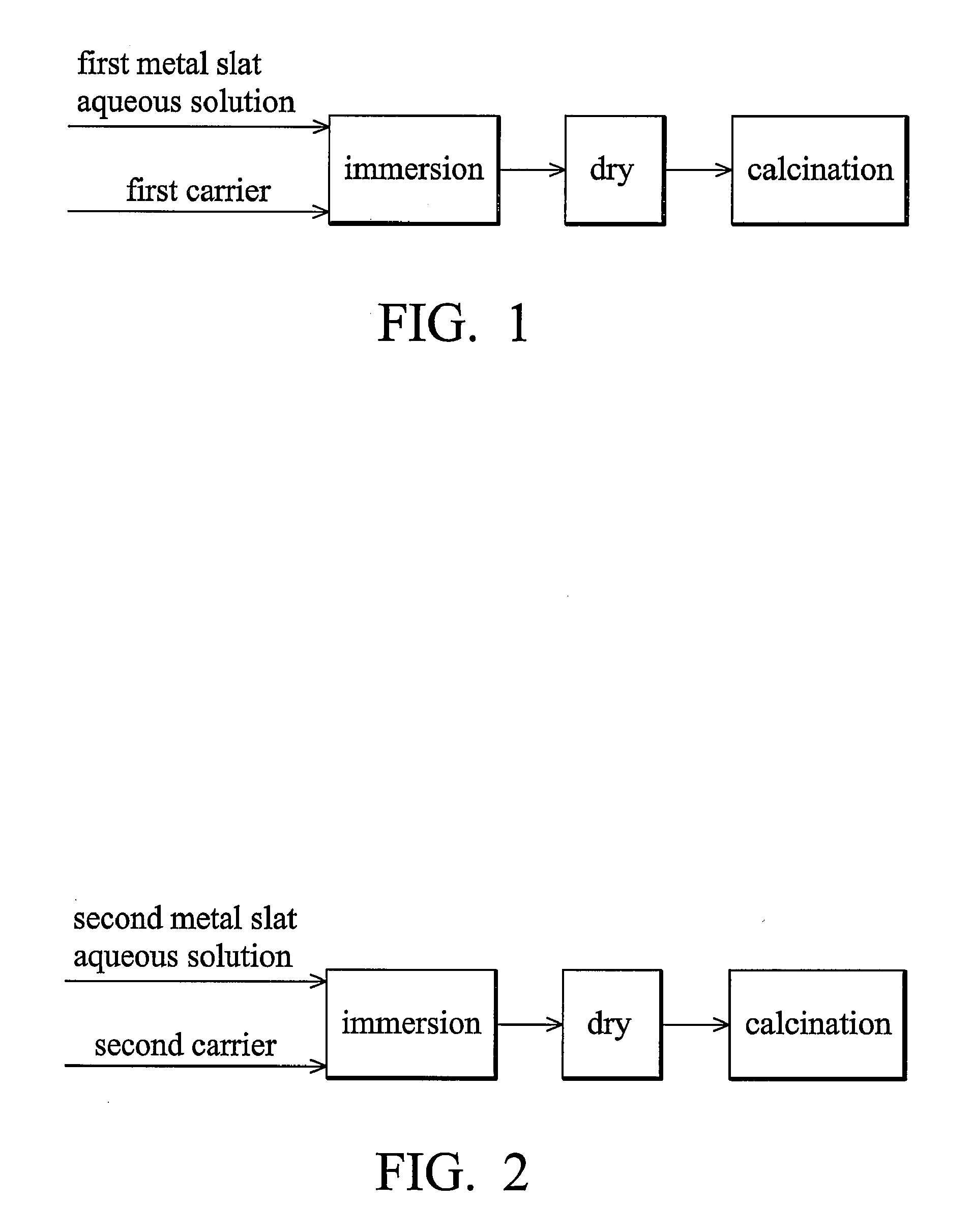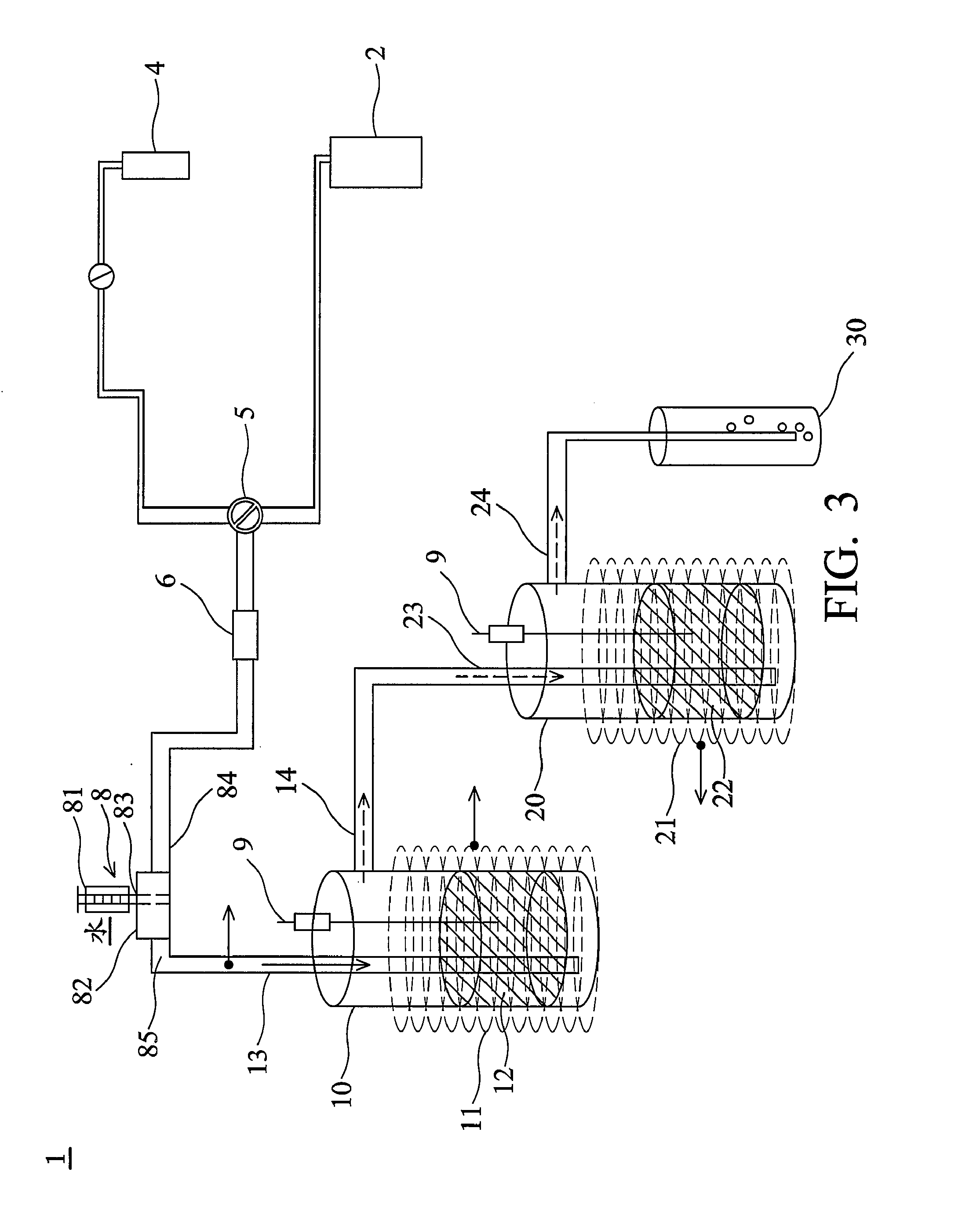Apparatus for decomposing suflur-fluorine-containing compound and method thereof
- Summary
- Abstract
- Description
- Claims
- Application Information
AI Technical Summary
Benefits of technology
Problems solved by technology
Method used
Image
Examples
example 1
[0049]A gas containing 12161 ppm of SF6 was provided through the sulfur-fluorine-containing compound supply 2 and ratios of the SF6 gas flow to volumes of the first catalyst 12 and the second catalyst 22 were about 100 h−1 (gas hour space velocity; GHSV). The SF6 gas was wet by the wetting equipment 8, in which water was vaporized to be added into the SF6 gas and ratio of vapor volume to the SF6 flow was about 30. The wet SF6 gas was led from the first inlet 13 to the first reactor 10 and was then decomposed into the first decomposition by the first catalyst 12. The first decomposition was led out of the first reactor 10 to the second reactor 20 via the second inlet 23 and was in contact with the second catalyst 22 to decompose and produce the second decomposition comprising the resulting compound such as SO3, HF and SO2F2. Reaction temperatures in the first reactor 10 and the second reactor 20 were both at a temperature of about 680° C. After decomposition, DRE to the SF6 gas was a...
example 2
[0050]A gas containing 11719 ppm of SF6 was provided through the sulfur-fluorine-containing compound supply 2, in which the GHSVs were the same as example 1. The SF6 gas was wet by the wetting equipment 8 and ratio of the added vapor volume to the SF6 flow was about 50. The wet SF6 gas was led from first inlet 13 to the first reactor 10 to decompose and produce the first decomposition. The first decomposition was then led out of the first reactor 10 to the second reactor 20 via the second inlet 23 and was in contact with the second catalyst 22 to decompose and produce the second decomposition. Reaction temperatures of the first reactor 10 and the second reactor 20 were at a temperature of about 580° C. DRE to the SF6 gas in example 2 was about 99.9% and transfer ratio of the residual SO2F2 to SF6 was less than 0.1 mol %. Accordingly, the SF6 gas was completely decomposed into the resulting compound capable of water-solubility through the decomposition apparatus 1. The resulting comp...
example 3
[0051]A gas containing 1073 ppm of SF6 was provided through the sulfur-fluorine-containing compound supply 2, in which the GHSVs were 1216 h−1. The SF6 gas was then wet and ratio of the added vapor to the SF6 gas flow was 120. The wet SF6 gas was led from the first inlet 13 to the first reactor 10 and was decomposed by the first catalyst to produce the first decomposition. Then, the first decomposition was led out of the first reactor 10 to the second reactor 20 via the second inlet 23 and was in contact with the second catalyst 22 to decompose and produce the second decomposition which comprised SO3, HF and SO2F2. Reaction temperatures in the first reactor 10 and the second reactor 20 were at a temperature of about 780° C. DRE to the SF6 gas was about 99.9% and transfer ratio of the residual SO2F2 to SF6 was less than 1.6 mol %. That is, the SF6 gas was completely decomposed into compounds capable of water-solubility through the decomposition apparatus according to the invention. T...
PUM
| Property | Measurement | Unit |
|---|---|---|
| Temperature | aaaaa | aaaaa |
| Temperature | aaaaa | aaaaa |
| Concentration | aaaaa | aaaaa |
Abstract
Description
Claims
Application Information
 Login to View More
Login to View More - R&D
- Intellectual Property
- Life Sciences
- Materials
- Tech Scout
- Unparalleled Data Quality
- Higher Quality Content
- 60% Fewer Hallucinations
Browse by: Latest US Patents, China's latest patents, Technical Efficacy Thesaurus, Application Domain, Technology Topic, Popular Technical Reports.
© 2025 PatSnap. All rights reserved.Legal|Privacy policy|Modern Slavery Act Transparency Statement|Sitemap|About US| Contact US: help@patsnap.com



